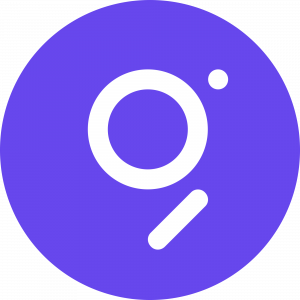
Today I took a deep-dive into an interesting project called The Graph.
The Graph is a decentralized protocol for indexing and querying data from Blockchains. The Graph indexes Blockchain data from networks like Ethereum and Filecoin, and data is subsequently grouped into open APIs called subgraphs that anyone can query.
History
The Graph started in late 2017 through the efforts of a group of software engineers who had become frustrated as a result of the lack of tooling in the Ethereum Ecosystem. The absence of tools made building decentralized applications significantly more difficult. The Graph went live in December 2020.
Purpose
The Graph’s mission encompasses helping developers to utilize relevant data to increase the efficiency of their decentralized applications. Instead of developing and operating proprietary indexing servers, users can take advantage of The Graph Network. With The Graph, endpoints pose queries via GraphQL. GraphQL is a widely-used language originally created by Facebook to gather data for users’ news feeds.
How Does it Work
The Graph Network functions by aggregating data through the Graph Nodes. These continuously scan network blocks and smart contracts for new information.
When an application adds data to the Blockchain through smart contracts, the Graph Node adds the data from these new blocks to its appropriate Subgraphs.
Once the Graph Node extracts information, four types of user who contribute to organizing data in its protocol become apparent. These users include Indexers, Curators, Delegators and Consumers.
Indexers
Indexers operate nodes within The Graph and stake using GRT tokens. Their main function encompasses indexing relevant subgraphs. Indexers earn rewards for indexing subgraphs and fees for serving queries on those subgraphs. They also set prices for their services. To keep prices in check, Indexers compete with one another.
Curators
Curators use their GRT tokens to signal which subgraphs are worth indexing. Curators generally fall into one of two categories, namely developers that want to ensure that Indexers index their subgraph, or end-users that find a particular subgraph valuable. Curators receive financial incentivizes as they earn rewards proportional to how popular a particular subgraph becomes.
Delegators
Delegators stake their GRT on behalf of Indexers in order to earn a portion of Indexers’ rewards and fees. Delegators do not have to run a Graph Node.
Consumers
Consumers query Indexers and pay them for providing data from different subgraphs. Consumers typically consist of end-users, other web services or middleware.
Token
The Graph’s native token is GRT. GRT is a work token used to allocate resources in the network. Active Indexers, Curators and Delegators can provide services and earn income from the network. This income is proportional to the amount of work they perform as well as their GRT stake.
The GRT cryptocurrency derives its value from its ability to ensure the successful execution of smart contracts that depend on the The Graph protocol. GRT is the only cryptocurrency used for network operations.
Anyone who owns and stakes GRT tokens can vote on proposals that influence and alter the rules that govern the Graph platform’s use. Delegators assign their voting rights to someone else to vote on their behalf.
GRT is an ERC20 token on the Ethereum Blockchain.
Conclusion
The Graph is an interesting project that has often been called The Google of Blockchain. Interestingly the blockchain game Decentraland accesses The Graph’s information to find land, accessories and collectibles across applications and brings them into their marketplace. Decentraland is the first popular virtual world powered by Blockchain and managed using a DAO. On June 10th 2021, a plot of LAND on Decentraland sold for $704,000, representing the highest amount paid for a plot on the platform!